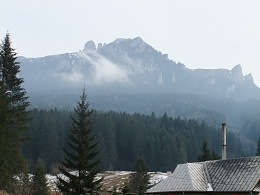In my last post I wrote about a rather less typical part of the Orthodox church in Romania. The next two will be about possibly the most characteristic and noticeable feature of Romanian Orthodoxy: the monasteries.
I was already eager to see the Painted Monasteries of Moldavia even the name sounds like something out of a fantasy novel. So when a petrolhead friend and fellow theology student wanted to give his new Audi a taste of Romanias mountain roads, a plan was born: a monastic road trip.

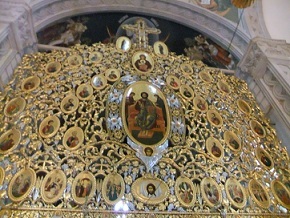
On the first day we went North, into the Bucovina region, close to the border with the Ukraine. I think the pictures speak for themselves.
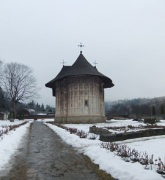


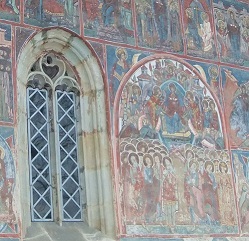


In fact, I spent so much time taking photos that we got rather behind schedule. No problem: just a chance to experience Romanian monastic hospitality. Well eat here, my friend said and sure enough we did. Even though we had turned up at three oclock, and just as a service was about to start, the convents designated English-speaking nun showed us into the refectory where we presented with a succession of delicious traditional Romanian dishes: soup with noodles; fried eggs with cheese; big pieces of a flavoursome, salty cheese topped with sour cream; mamaliga (polenta); white wine; and coffee with mini muffins.
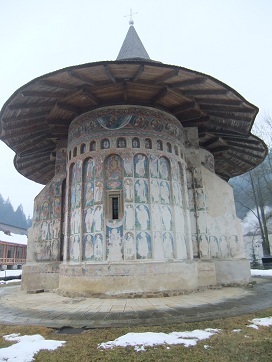
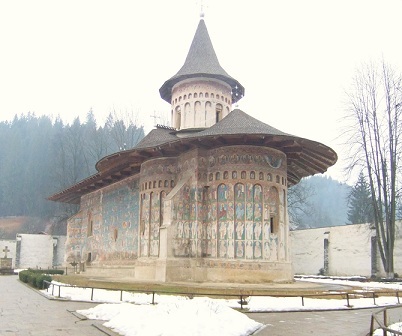



In fact everywhere we turned up to seemed to have plenty of food and wine, and spirits But for our overnight stay we were going somewhere more glamorous: Putna, the self-declared spiritual heart of Romania, home to more than 100 monks and to the relics of Romanias royal national saint Stephen the Great. We were just a few miles from the Ukrainian border (prayers for Ukraine here have a particular urgency) and some even say that the relics of Stephen the Great guard the border.


Here we were given yet more food and drink, and plenty of conversation. Romanian monks and nuns like to talk! But we had to eat in a guest house just outside the gate of the monastery; the monks wanted to serve us meat, and under rules recently promulgated by the Metropolitan no meat can be served within the monastic precincts. Internet and TV are also banned, so no WiFi for me that night!
I also gained a surprising insight into the Romanian self-identity. My friend startled me by identifying the difference between the English and the Romanians: the English host always has power over his guest and can choose whether to make them welcome, whereas Romanians always put themselves down. I heard the same thing, quite independently, from our monastic guide. This was my first introduction to the idea of smerenia – which translates as humility, but no English word quite does justice to the richness of a concept which is so central to Romanian culture.
So in the morning, very well fed and watered and informed, we headed south.
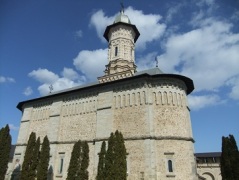

The drive was an experience. No offence to the Audi or to the driver, both of whom are very smooth, but Romanian roads leave something to be desired. Something like tarmac. And its a right-hand drive car, so I was getting a really good view of the oncoming traffic, horse-drawn carts and all. Still, it was great fun taking the car round the mountain passes. We only found out after the trip that the brake pads were worn down to nothing
The scenery itself was also a bit of a lesson in the history and politics of Romania. My friend pointed out a village named Freedom, founded for former serfs at the abolition of serfdom in the 1940s!


Now we were in the Neamţ region known, I was told, for its slightly crazy people! Well, there were certainly a few crazy monks around, in a good way. This one sold me a priests hat! He also showed off his English and asked for my email address
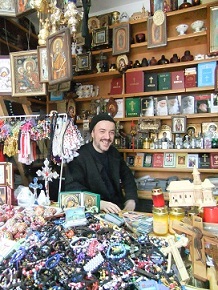
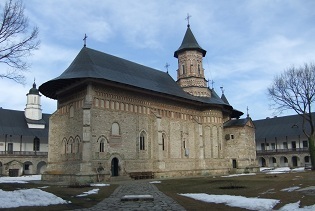



Some of the monks were a little less lively
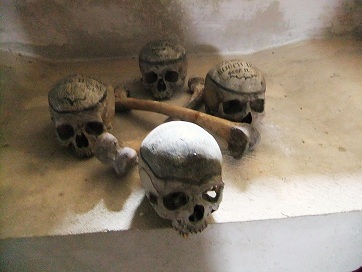
But our final destination was yet to come: the mountain of Ceahlau, which Wikipedia delightfully describes as one of the most notorious mountains of Romania! I kept asking my friend to stop the car so I could take a picture when he told me that I was going to see that mountain every morning for the rest of the week. The nuns of the mountains own monastery, Durau, had agreed to let me live there for a few days. Frankly, for the sake of mountains every morning and three-course peasant meals every lunchtime, Id happily become a nun too!
But thats another story
